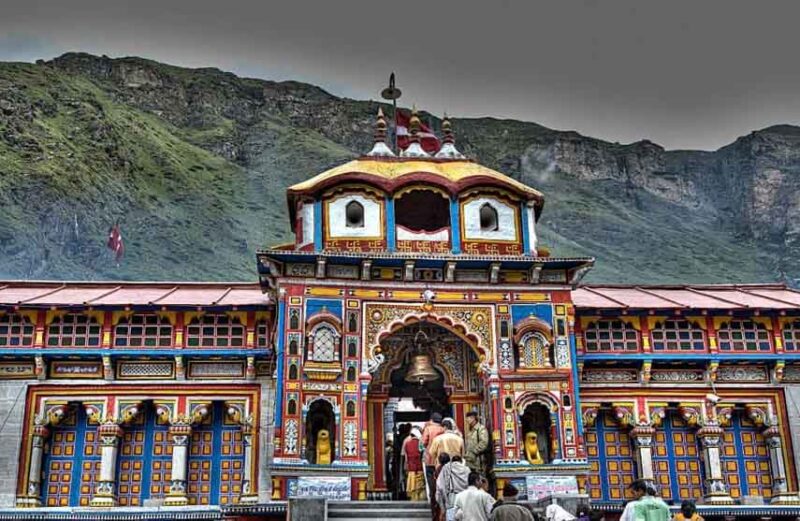Here are 30 interesting facts about Badrinath Temple:
- Sacred Site: Badrinath Temple is one of the four sites in the Char Dham pilgrimage, essential for Hindus.
- Dedication: The temple is dedicated to Lord Badrinarayan, a form of Lord Vishnu.
- Historical Significance: It was established by Adi Shankaracharya in the 8th century CE.
- Location: The temple is situated at an elevation of 3,133 meters (10,279 feet) in the Garhwal Himalayas, Uttarakhand.
- Alaknanda River: The temple is located on the banks of the Alaknanda River, which is considered holy.
- Idol: The idol of Lord Badrinarayan is made of black stone and is about 1 meter tall, representing Lord Vishnu in a meditative posture.
- Architecture: The temple features traditional North Indian temple architecture, with a stunning façade and intricate carvings.
- Climate: The temple is closed during winter due to heavy snowfall and reopens in late April or early May.
- Tapt Kund: A natural hot spring near the temple where pilgrims take a holy dip before worship.
- Mana Village: The nearby Mana Village is the last Indian village before the Indo-Tibetan border and holds cultural significance.
- Panch Shaligram: The temple complex contains five sacred Shaligrams, which are stones worshipped as representations of Vishnu.
- Annual Festivals: Major festivals, like Badri-Kedar Utsav, draw thousands of devotees every year.
- Path to the Temple: The trek to Badrinath involves scenic routes, often filled with breathtaking views of the Himalayas.
- Gurudwara and Temples: The vicinity includes other religious sites like the ancient Badrinath temple and a Gurudwara.
- Pilgrimage Tradition: It is believed that visiting Badrinath provides liberation (moksha) from the cycle of birth and death.
- Puja Offerings: Pilgrims often offer fruits, flowers, and other items as part of their puja rituals.
- Winter Abode: During the winter months, the idol of Badrinarayan is moved to the village of Joshimath.
- Unique Legends: Local legends say that the temple was once a forest where Lord Vishnu meditated.
- Badrinath and Badri: The name ‘Badrinath’ is derived from ‘Badri,’ which refers to the berry trees found in the area.
- Spiritual Awakening: Adi Shankaracharya is said to have revived the temple’s significance in Hindu spirituality.
- Protection and Devotion: The temple is guarded by the Neelkanth peak, which adds to its scenic beauty.
- Badrinath Trust: The Badrinath-Kedarnath Temple Committee manages the temple and its activities.
- Sankirtan and Bhajan: Devotional songs and chants are regularly performed, creating a spiritually uplifting atmosphere.
- Cultural Hub: The temple attracts not just pilgrims but also tourists interested in the region’s culture and natural beauty.
- Himalayan Flora and Fauna: The region around Badrinath is rich in biodiversity, with various unique plant and animal species.
- Road Connectivity: The temple is well-connected by road, making it accessible to pilgrims from different parts of India.
- Cuisine: Local cuisine is available near the temple, featuring traditional Uttarakhandi dishes.
- Miracles and Myths: Many devotees recount personal miracles associated with their visit to Badrinath.
- Badrinath during Monsoon: During the monsoon, the area is prone to landslides, making it risky for travelers.
- Peace and Serenity: The temple’s serene environment, surrounded by mountains, offers a tranquil setting for meditation and reflection.
These facts illustrate the temple’s deep religious significance, cultural richness, and stunning natural surroundings.

